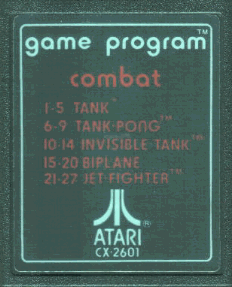
Atari 2600 VCS label variations
by Scott Stilphen
Determining if a cart you have is an original release or a re-release depends mostly on what type of label(s) it has. You can’t rely on any one specific detail; there are many factors involved: type font/color, picture/no picture, overall layout, etc. Atari had its products made at company-owned facilities in various locations around the world (besides the U.S.), such as Hong Kong, Puerto Rico, and Taiwan. Changes in software, hardware, or packaging did not affect all of these at the same time, which makes tracking down the original release version of a certain item even more difficult. The information listed below should help to sort out the confusion in many cases, but to be 100% sure on a given cartridge, I suggest trying to obtain some of the older catalogs.
FOUR MAJOR LABEL DESIGNS

1. Matte-black style (1977-1980)
This 1st style features cartridges with a matte-black (flat) finish, and colored text. Some of the cartridges have a colored border surrounding the text on the side label as well. Besides the title, the face of the cartridge also shows the game variations listed by number. Some titles were issued in two (or more) different-colored text. For example, Bowling appears with both red-lettered and blue-lettered labels. Furthermore, there are several sub-styles with the matte-black look:
1a. Numbered end labels (1977)
Only the original 9 releases appear with this style. The last 2 CX #’s of the title appear on the side label. A limited few have a colored border on the side label as well. The titles are:
02 Air-Sea Battle
61 Basic Math
51 Blackjack
01 Combat
11 Indy 500
03 Star Ship
12 Street Racer
41 Surround
21 Video Olympics
1b. Controller info added (1978)
Labels now have the controller type info listed, with Surround* being the first. The type and Atari logo are smaller. Those with larger ™ and ® symbols are earlier releases than those with smaller symbols. The number on the side label is dropped as well.
* Although the original release doesn’t list it, a label version of Surround has been found having the controller type info listed AND having a numbered end label.
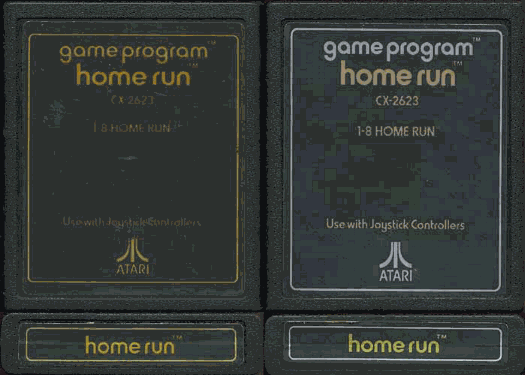
Breakout, Home Run, and Hunt & Score are the only 3 known (besides some of the original 9 releases) that were made with colored end labels. They also featured a colored border on the top label, which the originals did not have!
1c. Copyright dates added (1979)
The copyright © symbol and dates are now added to the label. Dates on older titles still being produced (or re-released) now have a different (later) copyright date.
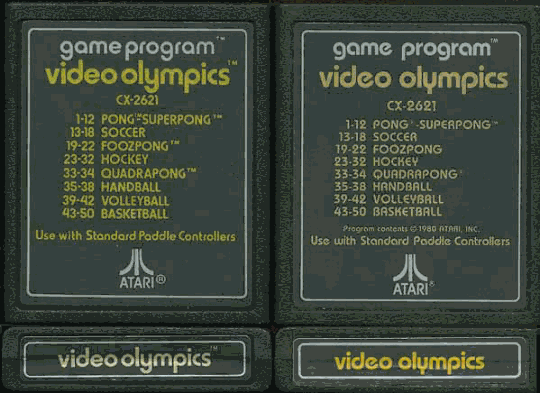
1d. Font change (1980)
The font on this variation is slightly different (note the letters "d", "e", "p", and "y"). All ™ and ® symbols are small again. Some titles were re-released with this change.
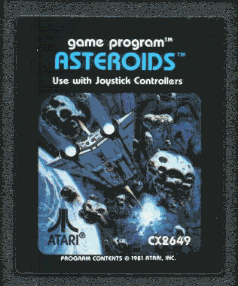
2. Full Color Picture Style (1981)
In 1981, Atari changed the label style to a more colorful, artistic look. These labels have a full-color picture that matches the box. The type colors used in previous titles remain the same, with a new color (purple) being added. A large Atari logo is featured in the lower left corner (normally black, but sometimes white), with the CX # in the lower right. The first cartridge to have this new label style was Video Pinball, followed by Missile Command, Asteroids, and Warlords.
Older titles (those produced before 1981) were "upgraded" to this new style, but still retain their original release dates (although the original 9 titles display a © 1978 instead.). Some titles were produced in more than one color of text.
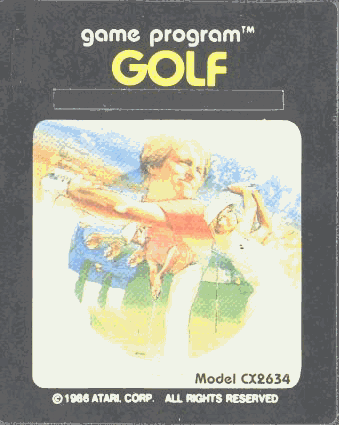
2a. Controller type error re-releases (1986-1988)
Between 1986 and 1988, many titles were re-released with b&w boxes and manuals (and occasionally the labels as well). There are several anomalies found in these re-releases, the first being the typo in regards to what type of controller the game uses. The label states "for use with Paddles", regardless of whether or not the game requires them. Most of these were "fixed" before release with a piece of black tape over the typo. The Atari logo and CX # may also be smaller. The known games with this error are:
3D Tic-Tac-Toe
A Game of Concentration
Air-Sea Battle
Code Breaker
Dodge 'Em
Flag Capture
Fun With Numbers
Golf
Home Run
Pele’s Soccer
Video Checkers
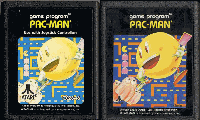
2b. Controller type omitted re-releases (1986-1988)
Some of these make no mention of what type of controller is used. Another difference with these is that the artwork on certain titles extends beyond the normal picture area, and may also be cropped differently than the original release. The Atari logo and CX # may also be smaller. Known carts that have this distinction are:
Air-Sea Battle
Brain Games
Combat
Code Breaker
Fun With Numbers
A Game of Concentration
Flag Capture
Home Run
Pac-Man
Adventure
Circus Atari
RealSports Football
Super Breakout
2b. Smaller Atari logo and CX # re-releases (1986-1988)
Hard to believe, but a few re-releases actually had the correct controller type info on the label! The one minor difference between these and their original 2nd-style release version is the smaller Atari symbol and CX #.
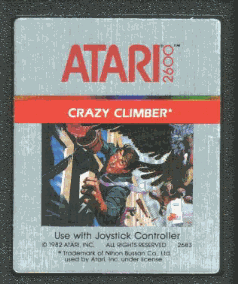
3. Silver picture style (1982-1985)
In 1982, Atari adopted another label style. The VCS was now being referred to by its product code number – "2600". The background color was changed from black to silver. A color picture remains centered on the label, and below this are the manufacturing notes and credits. All side labels are now printed in red. The 1st few releases using this design have the credits in very small type, with no copyright date listed. Curiously, the Atari "Fuji" logo no longer appears.
3a. Original version (1982-1983)
Instead of having "game program" at the top of the front label, it now says "Atari 2600 ™ " (with "TM" in black). The game title is printed against a red stripe, which stretches across the entire label. Few 1983 releases use this label version. Besides the re-issue of Atari Video Cube as Rubik’s Cube in 1984, some of the last titles were RealSports Soccer and RealSports Tennis.
3b. Larger picture, graphics-styled titles, cart design change (1983)
A minor change was made – the color picture was enlarged, and on the top-left, "Video Game Cartridge, Atari ® 2600 ™ VCS ™ " is printed, with "Atari 2600" at the top-right. The red stripe now only covers the width of the picture.
Starting in late 83, the game titles on the top label were "stylized" rather than appearing in plain text (not counting the RealSports line, which started in 1982.). Dig Dug, which features an unusually large red title band, appears to be the last title before this change takes place. This trend would continue up until the last released cart, Klax. A few of the early silver-labeled carts, such as Raiders of the Lost Ark, were re-released with this change.
Dig Dug also seems to be the 1st cartridges with an "unlocked" dust cover, followed by Pengo (which was produced with both types).
3d. Extended picture artwork (1984)
The picture artwork now extends beyond the normal picture area.
3e. Re-releases (1985-1988)
A number of older 1st and 2nd-style label carts were re-released with the 3rd-style label (3a) design. Some 1983 3b titles were re-released with a 3a design, and sometimes feature later copyright dates. The silver background on all these re-releases isn’t exactly the same reflective-silver type as the originals (one exception to this is Gremlins, which was originally released in 1986 and was the last 3rd-style title.). By 1988 the background was a light gray. Other ways to identify these is the copyright info is often in very small type, controller type info is usually missing, and the "TM" trademark on the "ATARI 2600" logo is red instead of black (the 87 and 88 re-releases of Ms. Pac-Man is one exception to this). The picture artwork also extends beyond the normal picture area, and may be cropped differently than the original release.
Starting in 1986, some cart cases had two holes on the top half, one under each upper corner of the label.
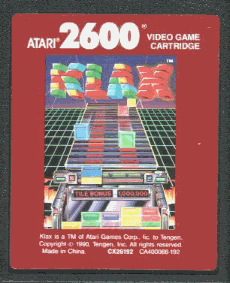
4. Red labels (1986-1990)
This was the 4th and final major label style. The background coloring is a brownish red, with white or black lettering. The pictures are not as wide as the prior styles, nor are they in color. "Atari 2600 Video Game Cartridge" is printed in white across the top of the front label, and the side label includes "Atari 2600 VCS".
4a. Black & white pictures (1986)
The first (and only) 3 carts that have b&w photos are Jr. Pac-Man, Midnight Magic, and Solaris (some of these were re-released a year or two late with color pictures, and the copyright date on the label reflects this). This was also the last year that Atari cartridges had the unlocked dust cover. Also, the original releases of Jr. Pac-Man and Midnight Magic were the only 4th-style carts to have a solid top cart casing – all other titles have the casings with the upper-corner holes.
4b. Color pictures (1987-1990)
All labels now have color pictures, and carts no longer have any dust covers. This final label version would continue up until the last released cart, Klax. All of the third-party (PAL?) re-releases also use this style, as well as a few older Atari titles that were re-released. The known re-released titles are:
Battlezone
Gravitar
Jungle Hunt
Kangaroo
Moon Patrol
RealSports Soccer
RealSports Tennis
Space Invaders
Yar’s Revenge
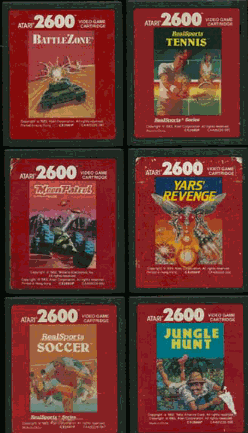
(Rare PAL 4th-style re-releases)
SPECIAL SERIES LABELS
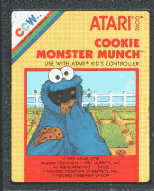
Children’s Computer Workshop Series (CCW)
These labels have a checkered grid over a yellow background. A color picture appears on the front, with "Atari 2600" in the upper-right. The only games to use this style are:
Alpha Beam With Ernie
Big Bird’s Egg Catch
Cookie Monster Munch
Oscar’s Trash Race
Grover’s Music Maker and Counting with the Count (both unreleased prototypes) would have had this label style.
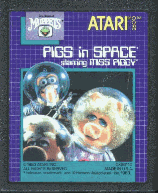
Jim Henson’s Muppets
These labels have a checkered grid over a purple background. A color picture appears on the front, with "Atari 2600" in the upper-right. The only game to use this style is Pigs in Space, although Miss Piggy’s Wedding (an unreleased prototype) would also have had this label style.
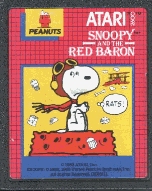
Peanuts
These labels have a checkered grid over a red background. A color picture appears on the front, with "Atari 2600" in the upper-right. The only game to use this style was Snoopy and the Red Baron, although Good Luck, Charlie Brown (an unreleased prototype) would also have had this label style.
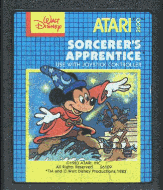
Walt Disney
These labels have a checkered grid over a blue background. A color picture appears on the front, with "Atari 2600" in the upper-right. The only game to use this style was Sorcerer’s Apprentice, although Donald Duck’s Speedboat Race, Dumbo’s Flying Circus, and Snow White (all unreleased prototypes) would also have had this label style.
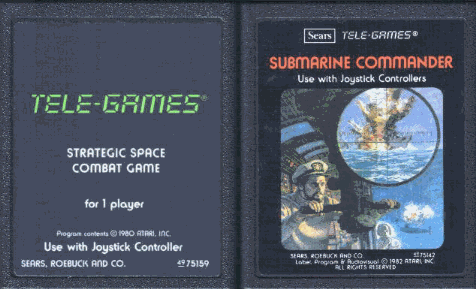
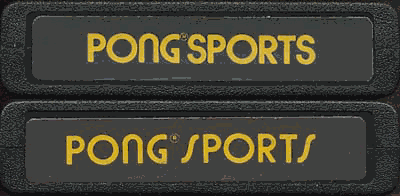
Sear TELE-GAMES labels
These were originally were made with a similar 1st matte-black style label, and later changed over to a similar 2nd-style label. Most titles can be found in both styles, and with 2 different product numbers (ex. Canyon Bomber was made with a 1st-style label, with either "49-75115" or "6-99828" product #’s). A few also have some type font variations. Some Sears titles feature different artwork from their Atari counterparts! A complete list of titles (with scans) can be found at:
http://www.msu.edu/user/reicher6/searsscan.htm.
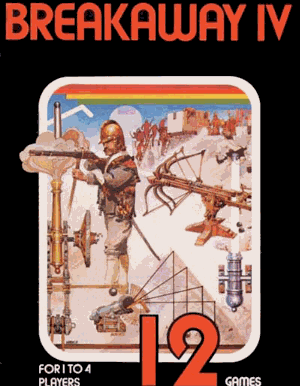
(Rare picture label and manual for Breakaway IV)
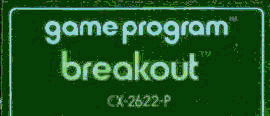
![]()

NTSC/PAL/SECAM versions
Games made for use outside the U.S. were distributed under the Atari International (U.K.) name. Labels (and sometimes title and program graphics) differ slightly from their U.S. counterparts. PAL titles in the 1st style have a "P" after the CX # on the top label. 2nd and 3rd-style carts have a small "p" on the side label. 4th-style carts either have a small "p" on the bottom of the cart casing (Ikari Warriors seems to be an exception. The PAL version doesn’t have any notation of this.).
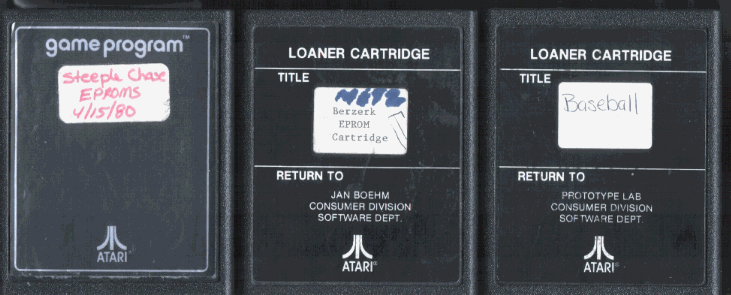
LAB LABELS
In the early 1980’s, prototypes were widely used by many companies for troubleshooting any programming bugs (via play-testing). This debugging stage also allowed them to make any necessary program additions, marketing decisions, and packaging designs. They were also sent to various trade magazines for both publicity and reviews. These prototypes are easily recognizable by their labels, which are completely black with white lettering. "Loaner Cartridge" is printed across the top, with the game title below that (usually on a white sticker or white printed area) in the center of the label. Under that, a "Return to…." info section appears (stating to return it to either Jan Boehm or the Prototype Lab.). Sometimes the game title is not attached, or it might be the only thing printed on the top label. There may be a black side (1st-style) label (without any writing on it), or none at all. Be wary of "reproductions" that look very similar.
The original "lab label" was a blank 1st-style label, with simply a white sticker on it with the game’s title.
ANOMALIES, MISPRINTS, AND ONE-OF-A-KINDS
► 32-in-1
– This cartridge has a light green label with black lettering. There is no side label. This is the only cart known to have this style label. The PAL notation is a "P" after the CX #. An interesting side note is that the checkers game is the Activision version – not Atari’s!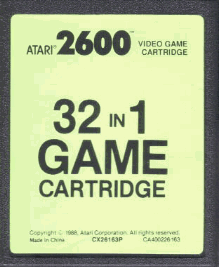
► 1987 & 1988 3rd-style re-releases – Most all of these usually omit the controller type info. A few titles also omit any Atari copyright dates!
► Air-Sea Battle – The 1987 re-release has slightly different and larger text.
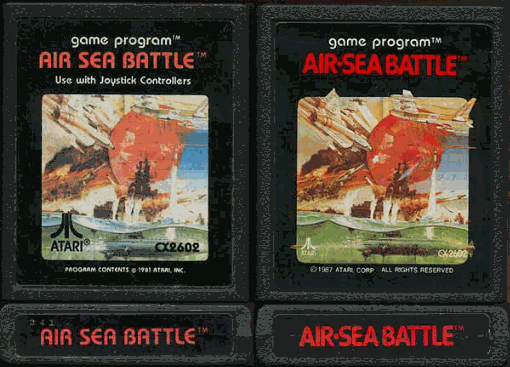
► Asteroids - The Sears version released in 1980 shows there are 64 game variations on the front label, which is incorrect (there are 66). This was fixed in the 1981 release.
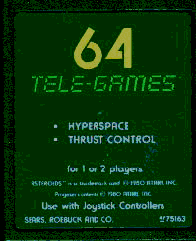
► Atari Video Cube – Later became Rubik’s Cube. Only the name and product # were changed.
► Basic Math – Later became Fun With Numbers
► Brain Games – The 1986 2nd-style re-release omits the controller type info.
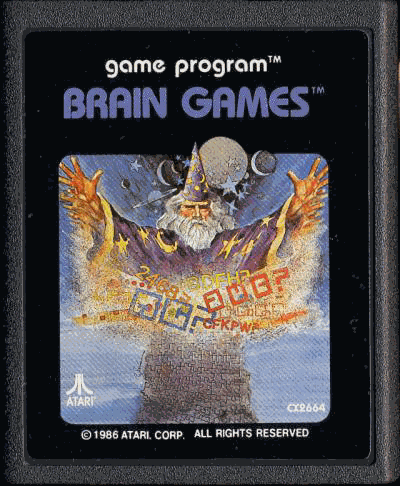
► Breakout – This 1986 NTSC re-release features a 2nd-style label with an orange background instead of black, and different/larger lettering on the side label.

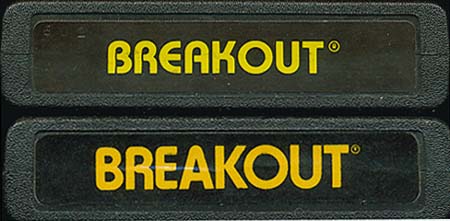
► Casino – A PAL version was found designed with "PAL" actually stamped onto the top label.
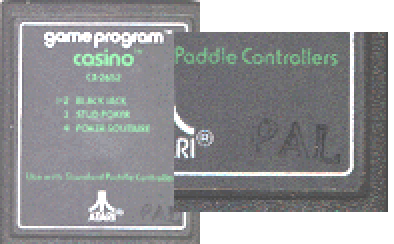
► Centipede – The 1985 re-release has an orange label instead of the traditional red (of this label style), along with a different (slightly larger) font.
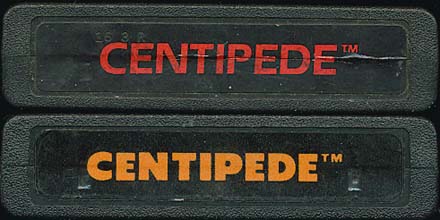
► Championship Soccer – Later became Pele’s Soccer. It’s interesting to note that when originally released, the box had a sticker on it with the full Pele’s Championship Soccer name, and the manual is titled with the full name, but "Pele’s" doesn’t appear on the cart label!
► Code Breaker – The 1986 release, besides lacking the controller type info, also has the artwork is reversed (picture #2), and the title is written as 2 words (instead of 1).
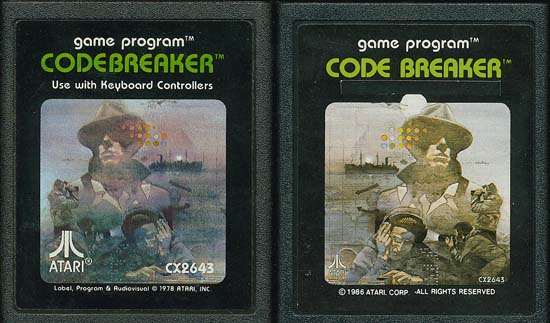

► Combat – There are 2 different versions of the 1979 "Made in Taiwan" re-release- one has a very glossy ‘finish’ while the other is completely flat. It appears that these finishes were not produced with any other titles.
► Crazy Climber - Pictured in the Atari Age magazine (V.1, No. 5) with a 2nd-style label style, but as of yet none have surfaced to proof its existence. Most likely this was an advertising "prop".
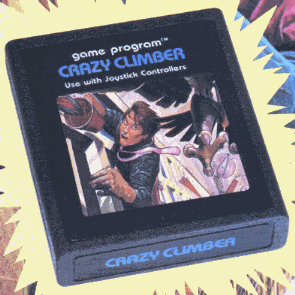
► Crystal Castles - The re-release (picture #1) doesn’t list the copyright date or controller info, but notice the slightly different artwork and title "logo". Part of the background is now filled in and the caption "Bentley Bear’s A-maze-ing Adventures" is added.
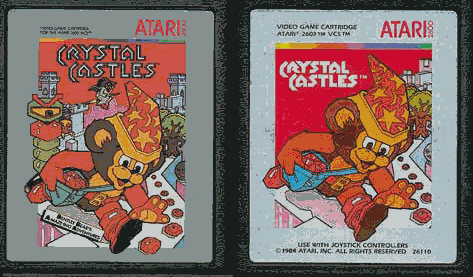
► Dark Chambers – This game was released in 1988 but programmed in 1983. This is noted on the label and is not a mistake. Question is – why did it take 5 years to get released?
► Defender - This 1986 PAL re-release features a 2nd-style label with blue background on the top and side labels.
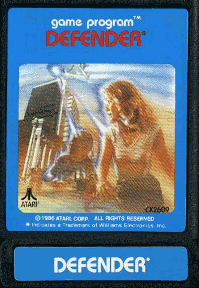
► Defender II – The artwork is reversed on all known releases.
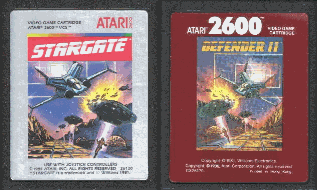
► Dig Dug – The 1988 re-release features all the copyright and controller type info in italics.
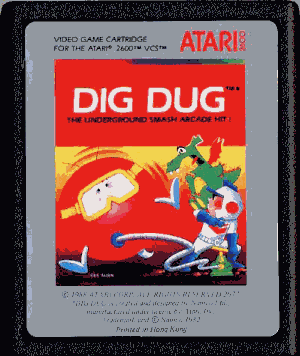

► E.T. – Some labels feature slightly different artwork- the diamond-shaped windows on the spacecraft are larger on one.
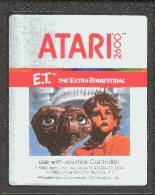
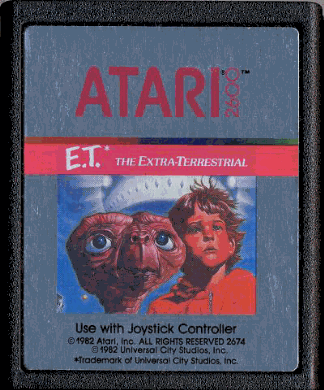
► Galaxian – Versions exist with a larger type font on the side label. The 1987 re-release omits the controller type info.

► Golf – A 1st-style label has been found with a large "L" sticker on the front, the meaning of which is unknown.
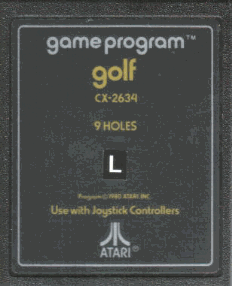
► Joust – A PAL version exists that has the typo "Atar Corp." on the front label (no "i"). An NTSC version has also been found with a "p" (PAL) end label.
► Home Run – The 1988 re-release, besides omitting the controller type info, has the title is written in red type as 1 word (instead of 2), plus the end label type is larger
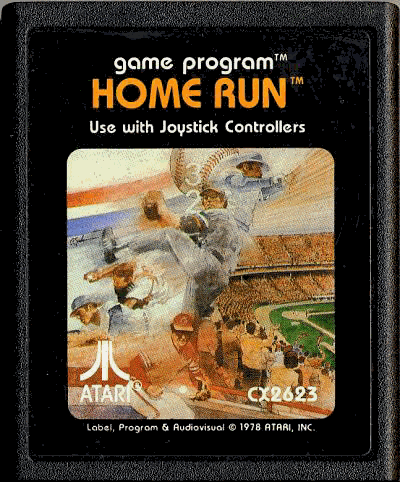
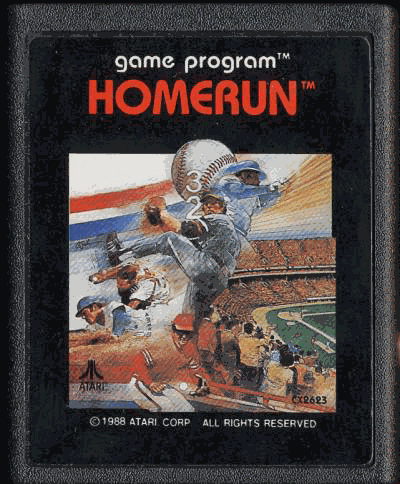
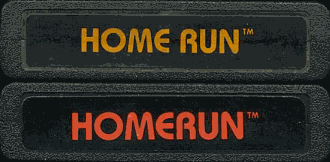
► Hunt & Score – Later became A Game of Concentration.
► Ikari Warriors – The PAL version isn’t marked as such anywhere on the cart (or box?).
► Maze Craze – 2 different versions of the side label are known to exist. The bottom picture is the more rare version.
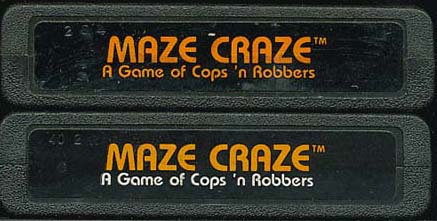
► Midnight Magic – Two different versions of the original 1986 release version exist. The original release has "Midnight Magic" in black lettering on the top label while all others have white lettering. Also, the white-lettered version doesn’t have a dust cover.
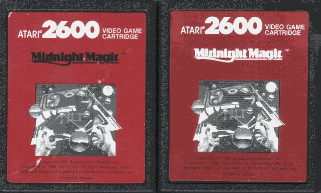
► Millipede – In addition to the 4th-style re-release, a "hybrid" label version exists with features of both the 3rd and 4th style labels.
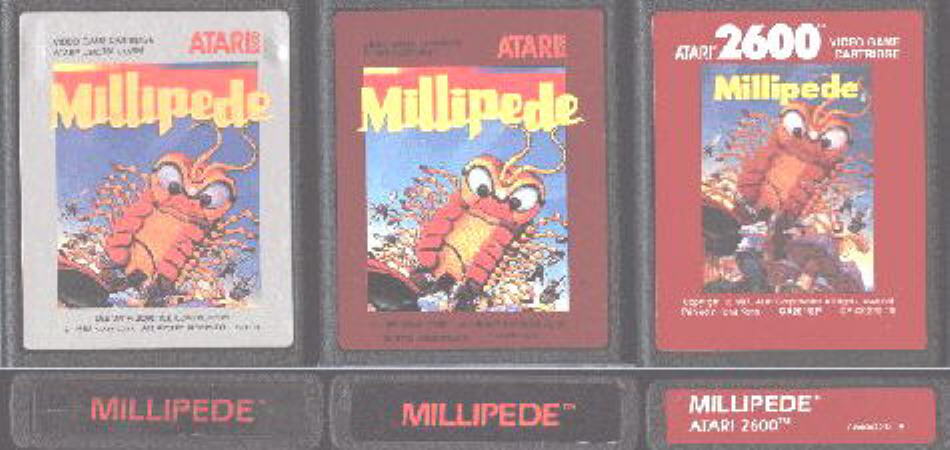
► Missile Command – The original release has the titles in lower-case text on both the side and front labels. Later issues have the top label title in caps. Final issues in this style have both the side and front label titles in all caps.
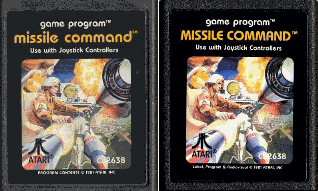
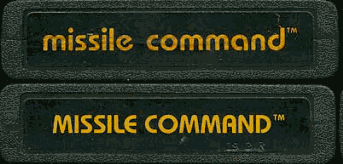
► Motorodeo – At least 1 cart has been found with an upside-down end label.
► Ms. Pac-Man – A label version has been found without "Atari 2600" on the top (also note how crooked the picture is). This might possibly be a pirate (Polyvox?) label, and not an acual Atari release.
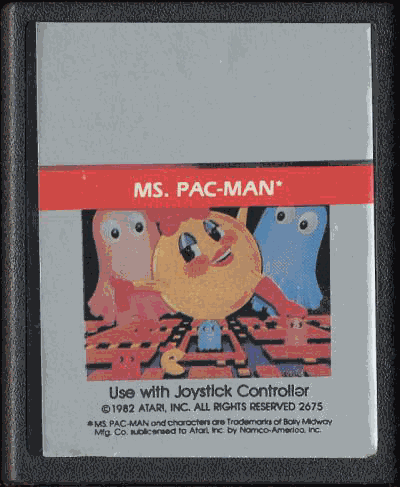
► Othello – This was the last game released with the 1st-style label. It’s the only one that has the title in capital letters, and the only one having the game variations text aligned to the center of the label. A "hybrid" version has been found with a 2nd-style top label and a 1st-style end label, which (if it can be confirmed that it wasn’t simply a manufacturing error) would make it the first picture-labeled cart.
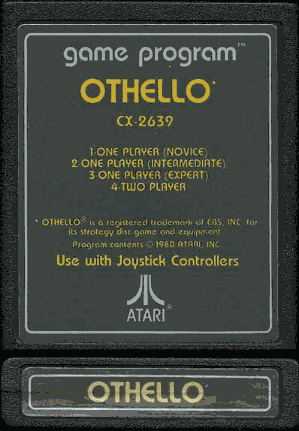
► Pele’s Soccer – The 1986 re-release has a typo on the top label that says "Atari Game Program Instructions" where the controller type info should be.
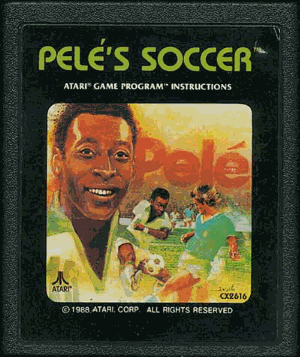
► Pengo – A PAL version exists with a 2nd-style label, which also has the controller type error.

► Pole Position – A typo exists with the side label printed as "POLE POSITN". There’s also rumored to be a version printed as "PLOE POSITION". There are also two versions of the top label.

► Quadrun – Several fake "Lab label" carts have shown up. Most often these are made with a laser printer, and are affixed atop a production cart label, such as Centipede. Notice the slight differences in the text size and font used: A few have also been found with the date 02-08-83 on them. If it has a later date (11-17-83) there may be a label underneath it with the earlier date. The board inside is an actual production board (not an EPROM).
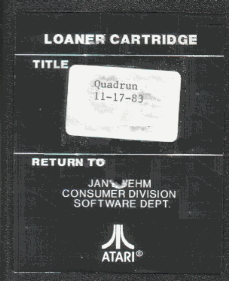
► Race (Sears) – The label version numbered 99821 doesn’t have the controller info listed.
► Raiders of the Lost Ark – At least 3 different side label variations are known to exist. The 1986 graphic logo re-release (picture 3) also omits the (*) Lucasfilm copyright information.

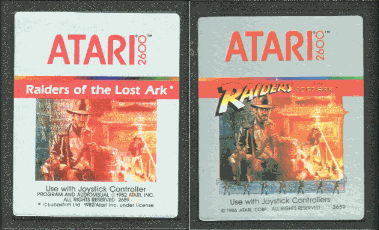
► Sears TELE-GAMES – Some titles have a slight color change on the end labels (from orange to yellow).
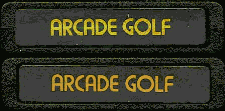
►
Space Invaders – The original release doesn’t have the Taito TM on the label. This title also has the distinction of being the only known game released under all 4 major label styles, as well as the 2 Sears label styles.
► Space Mission – This was the original name for Star Ship, and was featured in an ad from the December 1977 issue of Popular Mechanics magazine. No carts have surfaced with this name (or label) so most likely this was an advertising "prop".

► Sky Diver – The 1986 re-release features all-white lettering.

► Star Ship – Re-released in 1982 with a label that incorporates parts of the 1st 3 label styles. "Atari 2600" is printed in large white letters on the top (front label), and a glossy black background with colored lettering on the titles.
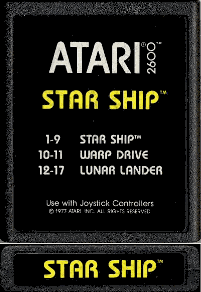
► Stargate – Some of these were printed using the actual arcade "font" lettering on side labels, besides the standard lettering font. The middle picture is a 1985 re-release, while the last is the 1987 one.

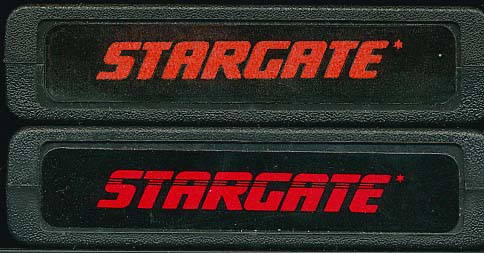
► Stellar Track – Normally the text is in orange, but a few were made with green instead.

► Street Racer
– A PAL version was found designated with a large, white "P" sticker on the top label.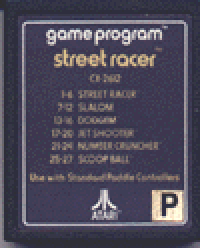
► Super Breakout – The Sears version was released as an exclusive (in 1981), a year before the Atari version, yet both carry a "© 1978" date on the label. Why is this? Some Atari versions have also been found with a "© 1983" date (but it is unknown if these are original releases or re-releases). The Sears version is also one of the only (?) 1st-style carts to have the game title on the top label.
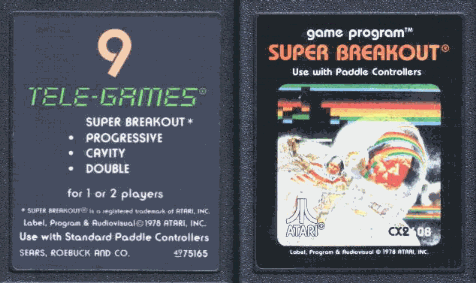
► Superman – The 1st release of this game has a program glitch that was fixed in the re-release. You can tell the difference between the two (in regards to the 1st-style labels): on the glitch version, the trademark and date appear on one line; in the fixed version, they appear on two lines.
► Swordquest Earthworld – The 1986 re-release has a "fancy" font lettering on the side label.
► TAZ – The 1988 re-release features all the copyright and controller type info in italics.
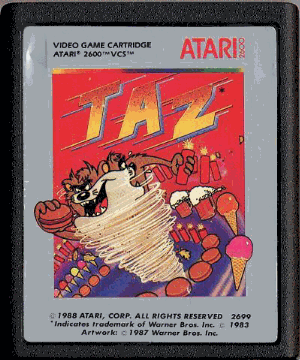
![]()
► Track & Field – This 1984 release inadvertently uses the same product number (CX26127) as Gremlins on the label. The picture and background are B&W with red title lettering. This is the only cart known to have this label style.
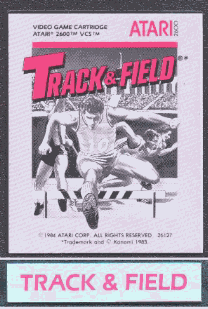
► Video Pinball
– The original release has the titles in lower-case text on both the side and front labels. Later issues have the end label title in caps. Final issues in this style have both the side and front label titles in all caps.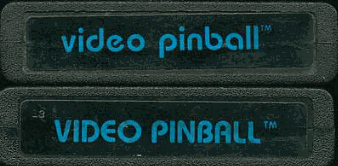
► Video Olympics – 4 different versions of the 1st-style end label exist. A 2nd-style label re-release exists with the title in yellow lettering on the top label and green on the side label. Also, 3 different-colored end labels have also been found in this style.
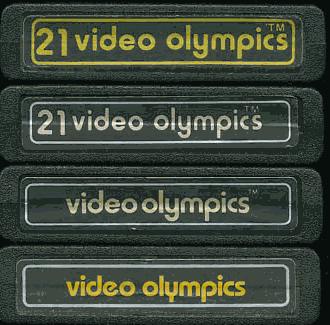
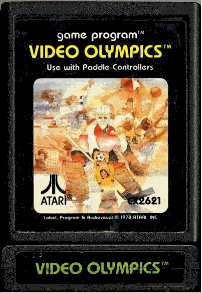

► Warlords – The Sears version seems to be the only one that had copyright info printed on the end label.
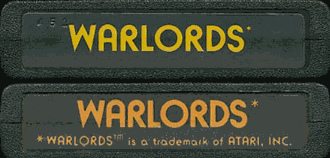
Please contact me with any additions or errors to this document.
Send an e-mail to Scott Stilphen (scottith@ptd.net)
Thanks to Matt Reichert (who currently maintains the Atari label variations list (
http://www.msu.edu/user/reicher6/) and the Atari Age site (www.atariage.com) for help with this revision.